41 which of the following vitamins and minerals is not mandatory on a food label?
eCFR :: 9 CFR 317.309 -- Nutrition label content. Other vitamins and minerals need not be declared if neither the nutrient nor the component is otherwise referred to on the label or in labeling or advertising and the vitamins and minerals are: ( A ) Required or permitted in a standardized food (e.g., thiamin, riboflavin, and niacin in enriched flour) and that standardized food is included as ... 300+ [UPDATED] Food & Nutrition MCQs and Answers [PDF] 12. Which of these is NOT considered a nutrient? | Food and Nutrition Questions. A. vitamins. B. minerals. C. fiber. D. fats. Ans: C. 13. Which of these is added to the food label because people sometimes don't eat ENOUGH of this? | Food and Nutrition Questions. A. fat. B. calcium. C. sodium. D. cholesterol. Ans: B. 14. Which of these is required on the food label? | Food and Nutrition Questions. A. total carbohydrate. B. sugars. C. iron. D. all of the above
Nutrition Facts Labeling — FDA Reader When additional vitamins and minerals are listed, the following order should be preserved: Vitamins (listed in order) Vitamin A. Vitamin C. Vitamin D. Vitamin E. Vitamin K. Thiamin. Riboflavin. Niacin. Vitamin B6. Folate. Vitamin B12. Biotin. Pantothenic Acid. Choline. Macronutrients & Minerals (In order) Calcium. Iron. Phosphorus. Iodine. Magnesium. Zinc. Selenium. Copper. Manganese. Chromium. Molybdenum. Chloride. Potassium

Which of the following vitamins and minerals is not mandatory on a food label?
Vitamin and mineral supplements: when are they needed? Vitamin B12: Those who do not consume animal products should take a vitamin B12 supplement during pregnancy and breastfeeding. Plant foods do not contain vitamin B12. Omega-3 fatty acids. Fish and other seafood supply long-chain omega-3 fatty acids. Plant sources include flaxseeds (also called linseeds), chia seeds, walnuts and canola oil. PDF MULTIPLE-CHOICE QUESTIONS - Springer Which of the following foods is not a good source of iron?: (a) meat, (b) eggs, (c) milk, (d) liver. 7. The amount of calcium required per day in adults is: (a) 5 mg, (b) 50 mg, (c) 250 mg, (d) 500 mg. 8. Goitre of the neck may be caused if there is a lack of one of the ... Three of the following minerals and vitamins may be involved in anaemia ... which of the following is not required on a food label? (points : 2 ... The information on a food label. According to the food and drug administration ( FDA ), some of the information that are required on a food label include the following: Total calories, Total fat calories, Protein percentage, Name and address of the vendor. In conclusion, vitamin D percentage is an information which is not required on a food label.
Which of the following vitamins and minerals is not mandatory on a food label?. 6 Essential Nutrients: What They Are and Why You Need Them - Healthline Some of the most common minerals are calcium, iron, and zinc. In addition to strengthening bones, calcium helps with nerve signal transmission, maintaining healthy blood pressure, and muscle... Nutrition Exam 3 Flashcards | Quizlet Water-soluble and fat-soluble vitamins differ in which way? a) water-soluble vitamins are generally less likely to be toxic b) water-soluble vitamins are best absorbed in the presence of dietary fat c) water-soluble vitamins are stored, whereas fat soluble vitamins are excreted readily d) fat-soluble vitamins have much less potential for toxicity NUT Quiz 2 - Which of the following is not required on a... Which of the following is not required on a nutrition label?Select one: a. The amount of all vitamins and minerals for which there is an RDA b. The serving size c. Total kcalories from fat per serving d. Vitamins and minerals Types Sources and their Functions - BYJUS Both vitamins and minerals combine to perform hundreds of roles in the body. Let us learn in detail about these vitamins and minerals below. Also Read: Difference between Vitamins and Minerals. Vitamins. Vitamins are organic compounds, found in natural foods which are required for normal growth and maintenance of the body.
Vitamins and minerals - British Nutrition Foundation Labelling of vitamins and minerals. The back-of-pack nutrition information provided on food labels sometimes indicates the amount of vitamins and minerals that a product contains as a percentage of the reference intake (RI), as outlined in European law, although it is not mandatory to provide this information. Classification of Nutrients - Nutrition: Science and Everyday ... There are 16 essential minerals and 13 essential vitamins (Table 1.1 and Table 1.2). In contrast to carbohydrates, lipids, and proteins, micronutrients are not a source of energy, but they assist in the process of energy metabolism as cofactors or components of enzymes (known as coenzymes). Enzymes, Solved 1. Which of the following is not considered a | Chegg.com Answer: 1) d) Alcohol Explanation: carbohydrate, protein, lipid (fat), water, vitamins, and minerals are six categories of nutrients. 2) b) Cancer Explanation: Many types of the canc …. View the full answer. Transcribed image text: 1. Which of the following is not considered a nutrient a Vitamin B. Water c.Carbohydrate (d) Alcohol e Mineral 2. Food and Drugs (Composition and Labelling) Regulations - CFS The text of section 3 of L.N. 226 of 2003 is reproduced below--"3. Transitional provision. It shall not be an offence under regulation 5(1) of the Food and Drugs (Composition and Labelling ) Regulations (Cap 132 sub. leg. W) ("the principal Regulations") to advertise for sale, sell or manufacture for sale on or before 18 June 2005 any prepackaged food containing any additive which is listed ...
Which of the following is not required on a food label? (points : 2 ... Which of the following is not required on a food label? (points : 2 total calories vitamin d percentage total fat calories protein percentage vitamin d content is not required information on a nutrition label? Advertisement. Nutrition declaration - EU labelling rules - Your Europe This is called 'nutrition declaration' and must appear directly on the package or on a label attached to it. The nutrition declaration must include the following information: energy value. amounts of fat, saturates, carbohydrate, sugars, protein and salt. The following nutrients can be indicated voluntarily in the nutrition declaration: Changes to the Nutrition Facts Label | FDA - U.S. Food and Drug ... Vitamin D and potassium are required on the label. Calcium and iron will continue to be required. Vitamins A and C are no longer required but can be included on a voluntary basis. Nutrition Labelling | Food Information FIC | Food Legislation ... - FSAI You can also choose to give the amount of one or more of the following: (a) Monounsaturates, (b) Polyunsaturates, (c) Polyols, (d) Starch, (e) Fibre, (f) Any of the vitamins or minerals listed in point 1 of Part A of Annex XIII to FIC, and present in significant amounts as defined in point 2 of Part A of Annex XIII to FIC,
Vitamins and minerals added to food - Food Standards Mandatory fortification is when food manufacturers are required to add certain vitamins or minerals to a specified food or foods. These are added in response to a significant public health need, e.g. in Australia only, manufacturers must add vitamin D to edible oil spreads (e.g. margarine); and thiamin and folic acid to wheat flour used for making bread.
Food labeling: MedlinePlus Medical Encyclopedia VITAMINS AND MINERALS, Vitamin D, calcium, iron, and potassium are the only micronutrients required to be on the food label. Food companies can voluntarily list other vitamins and minerals in the food. PERCENT DAILY VALUE (% Daily Value) Many nutrients include a percent daily value (%DV).
Frequently Asked Questions (FAQ) - National Institutes of Health Like other vitamins and minerals, selenium has a recommended intake and a safe upper limit. Adults should get at least 55 to 70 micrograms (mcg) of selenium, but not more than 400 mcg a day. One Brazil nut has about 70 to 90 mcg of selenium. So eating one or two Brazil nuts a day is a great way to get enough selenium.
Addition of vitamins and minerals - Food Safety The Commission, on the basis of a request by a Member State, has initiated the procedure under Article 8 of Regulation (EC) No 1925/2006 on the addition of vitamins and minerals and of certain other substances to foods for the intake of alpha-lipoic acid in food supplements because of the potential risk to health associated with the intake of this substance.
Vitamins and Minerals Involved in Energy Metabolism Vitamin B 12 is a unique vitamin because it contains an element (cobalt) and is found almost exclusively in animal products. Neither plants nor animals can synthesize vitamin B 12; only bacteria can synthesize it. The vitamin B 12 found in animal-derived foods was produced by microorganisms within the animals.
Which of the following is NOT required on a food label a company name ... Which of the following is NOT required on a food label? a. company name and addressb. product bar codec. amount in the productd. the % RDAs of all the vitamins and minerals in the producte. product name, d . the % RDAs of all the vitamins and minerals in the product, 20.
What's New with the Nutrition Facts Label | FDA - U.S. Food and Drug ... Vitamin D and potassium are now required to be listed on the label because Americans do not always get the recommended amounts. Diets higher in vitamin D and potassium can reduce the risk of...
Chapter 2 Flashcards | Quizlet because added sugars contribute to negative health conditions and should be consumed in very limited quantities, Which of the following vitamins and minerals is NOT mandatory on a food label? -Calcium, -Vitamin A, -Vitamin C, -Potassium, potassium, The first law requiring food labels to contain nutrition information was passed in 2000. false,
Vitamins and minerals - British Nutrition Foundation The reference intake (RI) for vitamins and minerals are used for food labelling can be found on the back of pack for some products. RIs are for adults and show the amount most of us need per day of each vitamin and mineral for good health. Some RI values are given in milligrams (mg), while others are in micrograms (µg).
CODEX GUIDELINES ON NUTRITION LABELLING - Food and Agriculture Organization 3.2.4.1 Only vitamins and minerals for which recommended intakes have been established and/or which are of nutritional importance in the country concerned should also be declared. 3.2.5 When nutrient declaration is applied, only those vitamins and minerals which are present in significant amounts should be listed. [18]
Principles of Nutrition Test 1 Flashcards | Quizlet Which of the following statements accurately describes vitamins? A) Cooking vegetables at high temperatures helps maintain the vitamins. B) Vitamins are indestructible. C) Almost every action in the body requires the assistance of vitamins. D) Vitamins A, D, E, and K are water-soluble vitamins. E) Vitamins are inorganic and do not provide energy.
which of the following is not required on a food label? (points : 2 ... The information on a food label. According to the food and drug administration ( FDA ), some of the information that are required on a food label include the following: Total calories, Total fat calories, Protein percentage, Name and address of the vendor. In conclusion, vitamin D percentage is an information which is not required on a food label.
PDF MULTIPLE-CHOICE QUESTIONS - Springer Which of the following foods is not a good source of iron?: (a) meat, (b) eggs, (c) milk, (d) liver. 7. The amount of calcium required per day in adults is: (a) 5 mg, (b) 50 mg, (c) 250 mg, (d) 500 mg. 8. Goitre of the neck may be caused if there is a lack of one of the ... Three of the following minerals and vitamins may be involved in anaemia ...
Vitamin and mineral supplements: when are they needed? Vitamin B12: Those who do not consume animal products should take a vitamin B12 supplement during pregnancy and breastfeeding. Plant foods do not contain vitamin B12. Omega-3 fatty acids. Fish and other seafood supply long-chain omega-3 fatty acids. Plant sources include flaxseeds (also called linseeds), chia seeds, walnuts and canola oil.
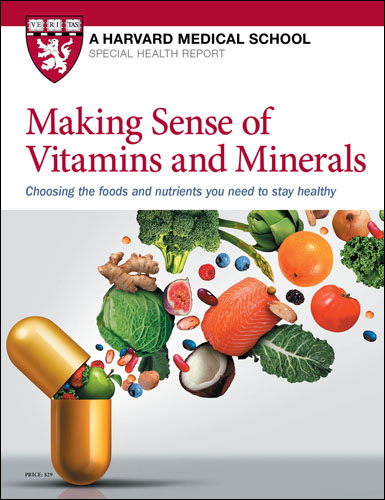





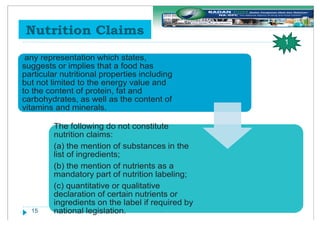
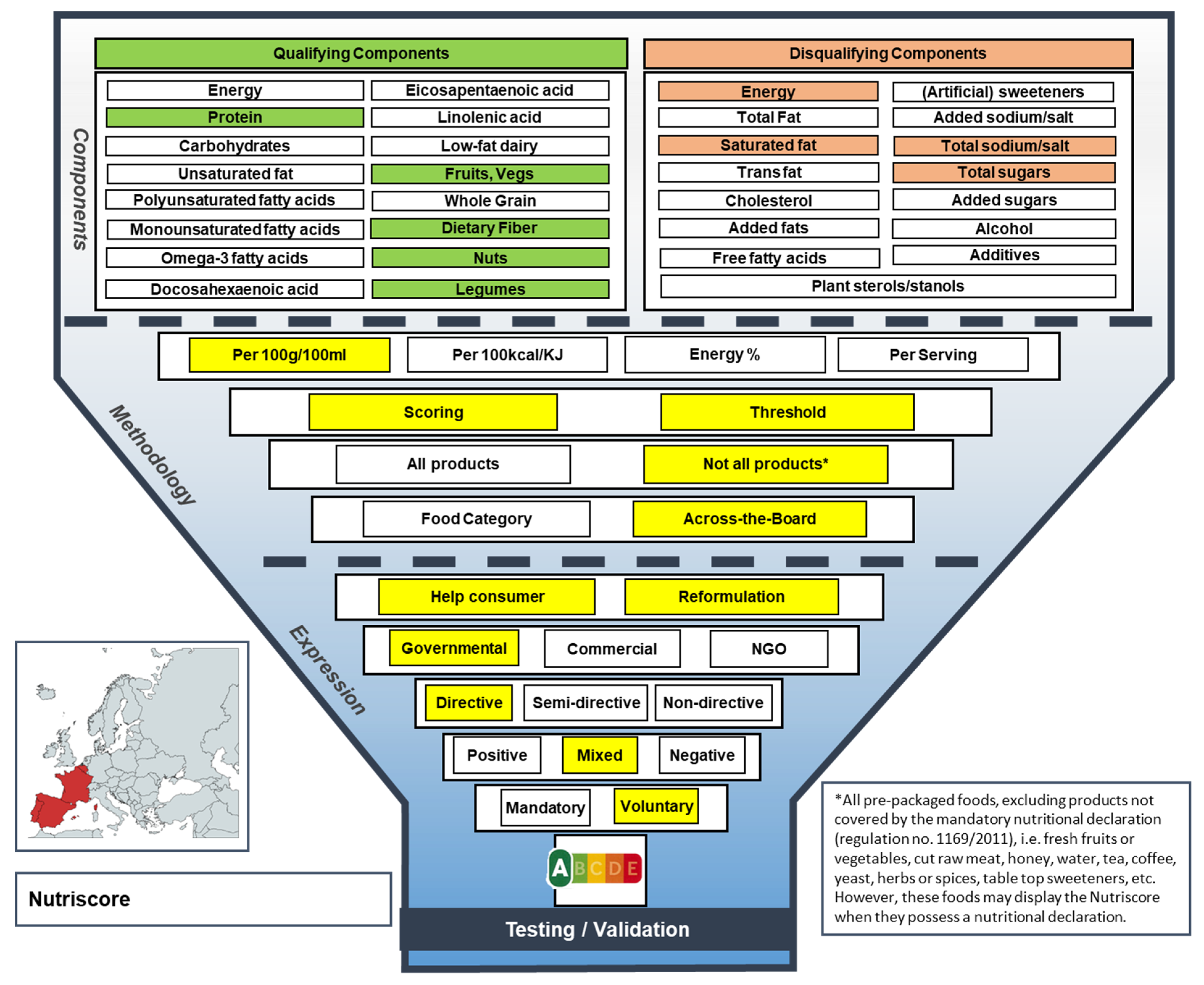
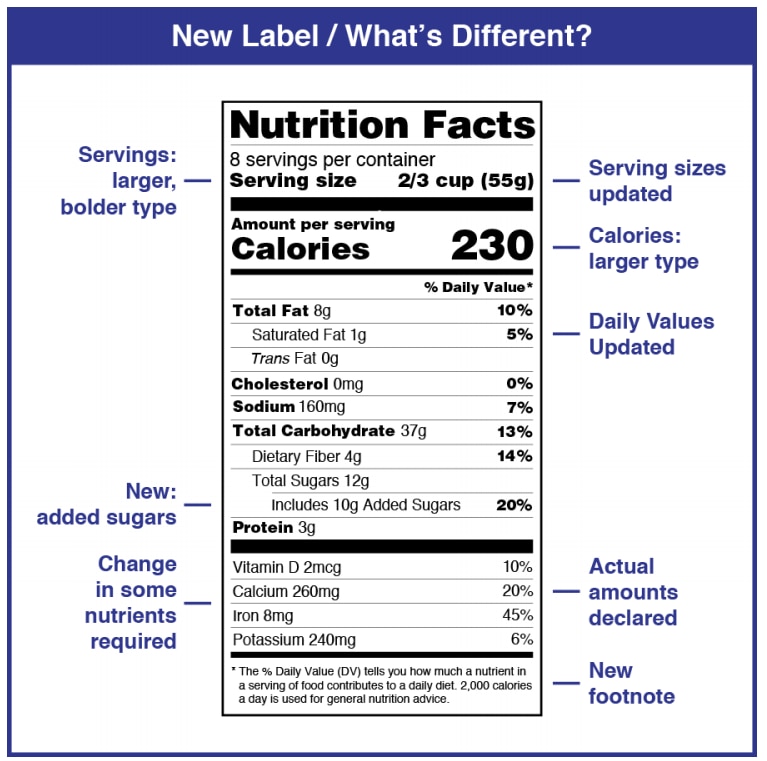





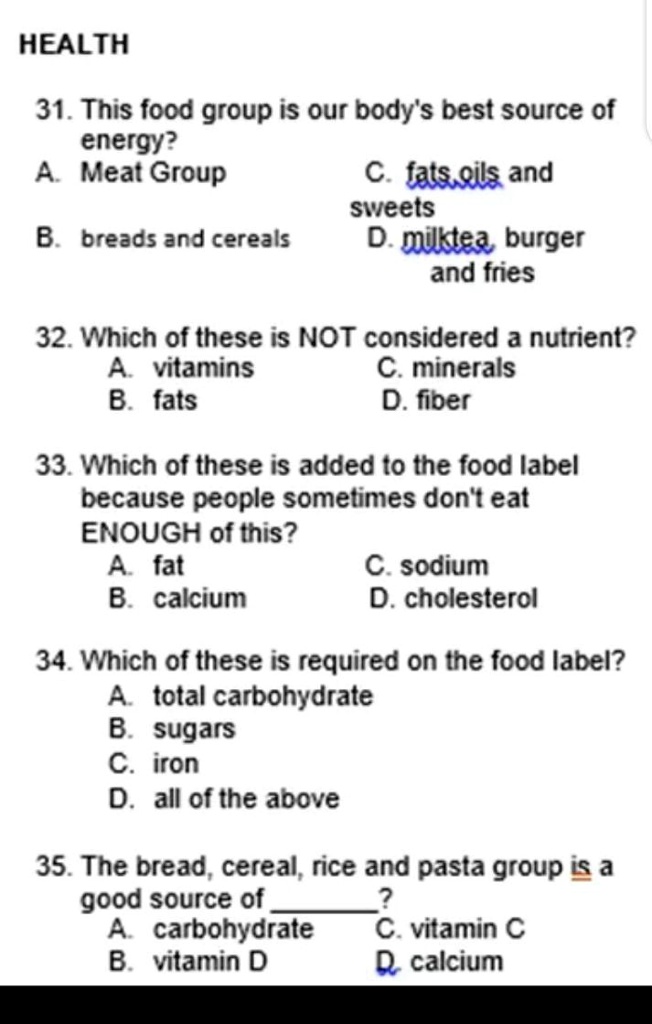
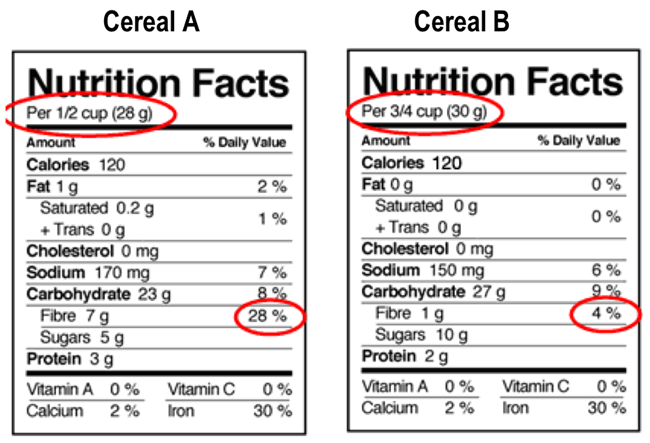


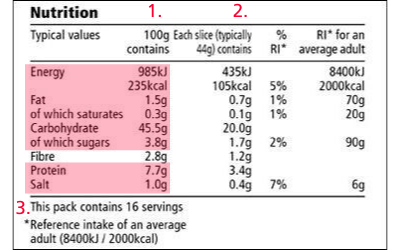



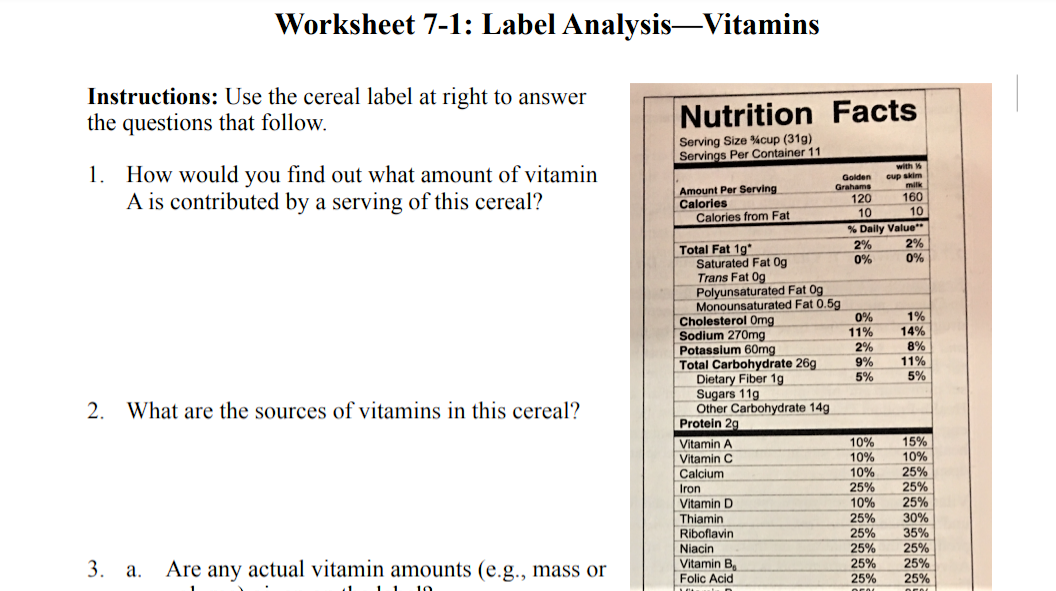






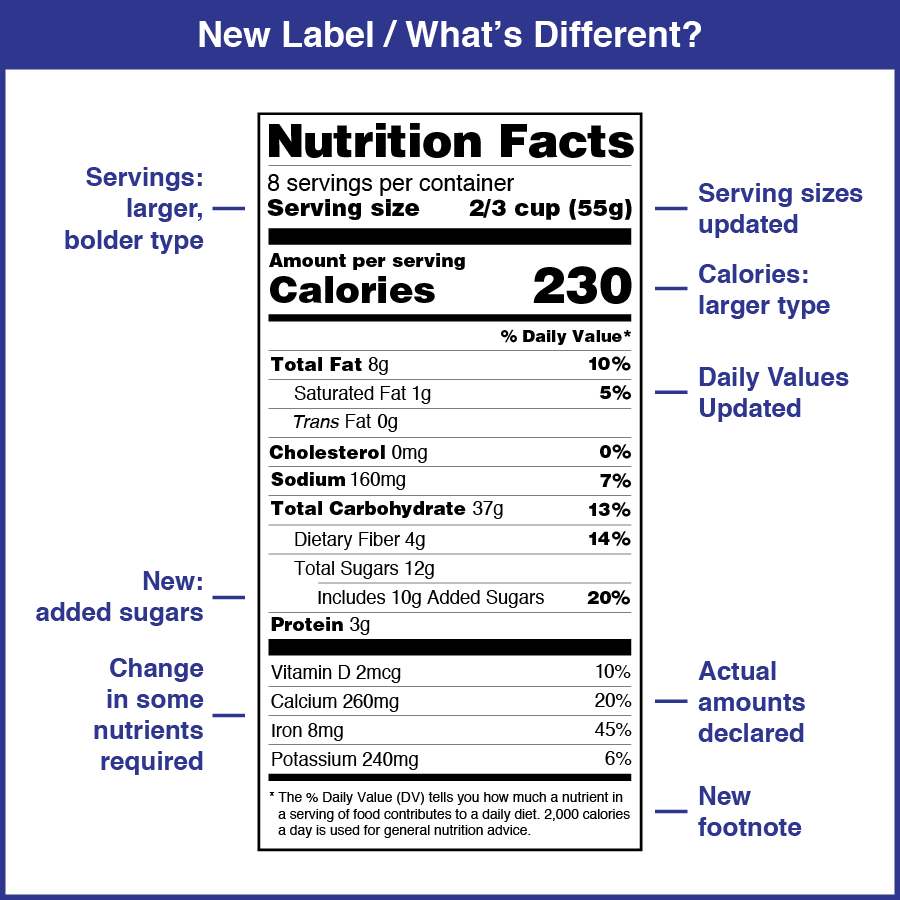


/nutrients-what-they-are-and-why-you-need-them-2507078-FINAL-e65d7ad29bdf4d99afca860abc76d19a.png)
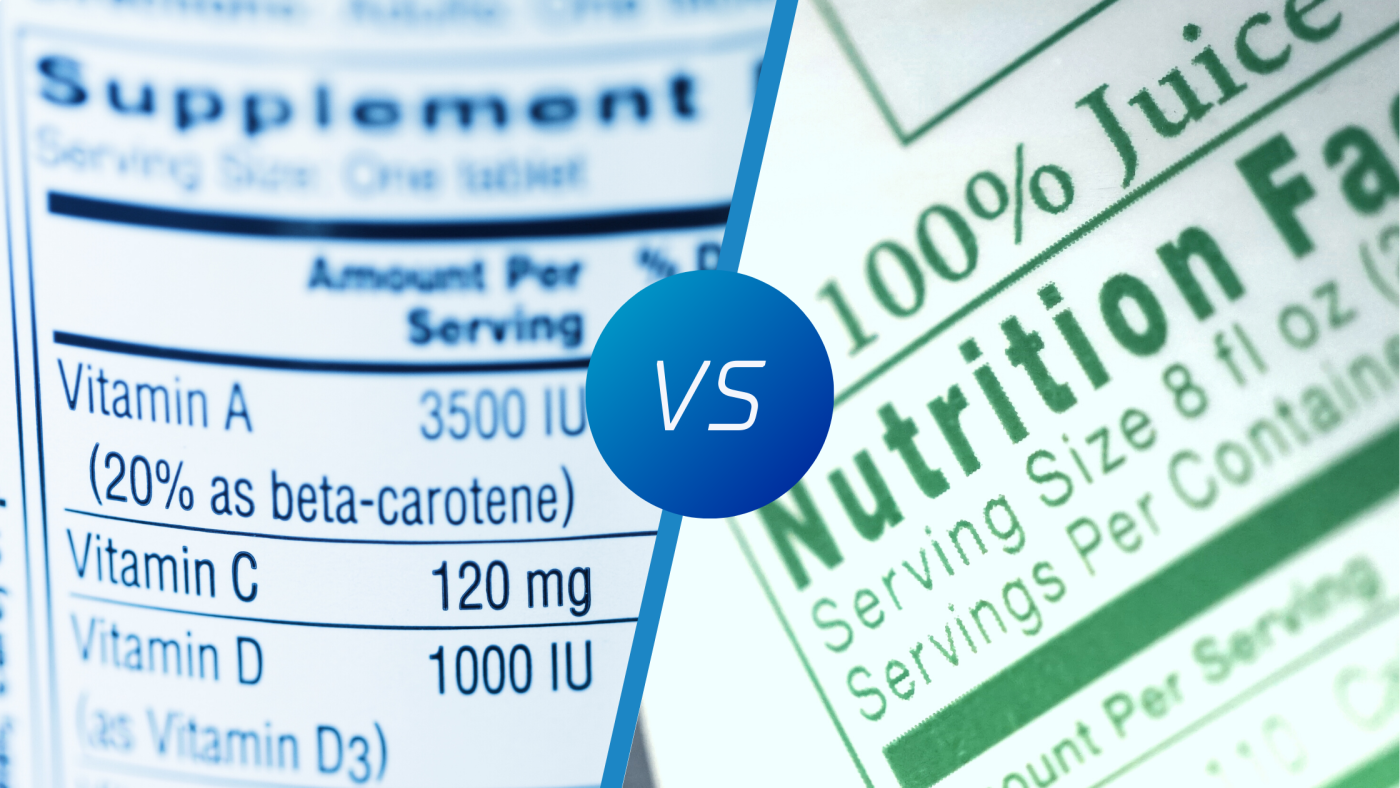

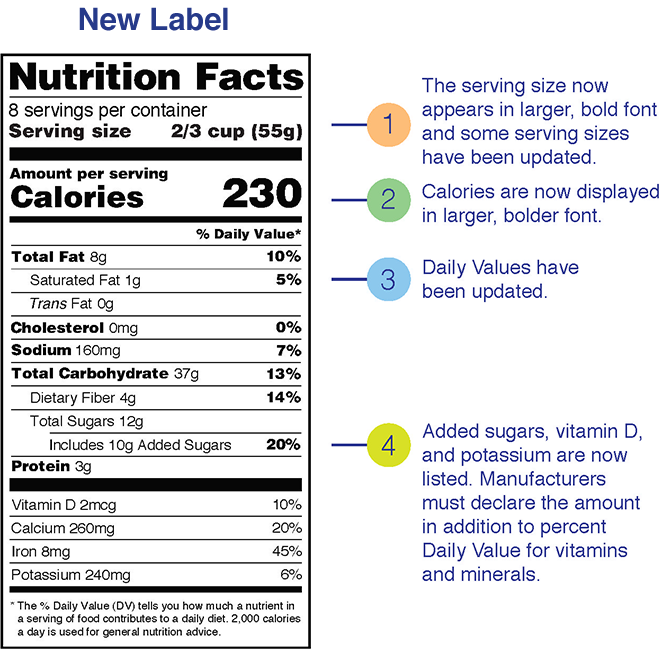


Post a Comment for "41 which of the following vitamins and minerals is not mandatory on a food label?"